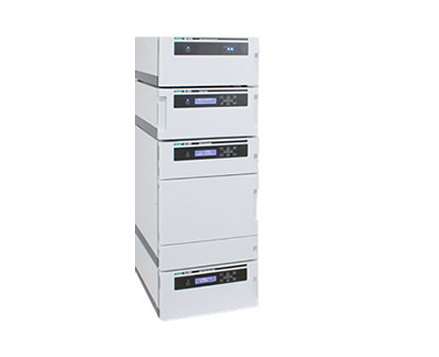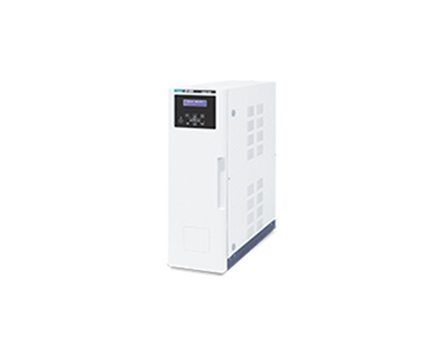Rapid Separation of Steroid Drugs (Betamethasone) using UHPLC
January 5, 2024
Introduction
Betamethasone, a steroid, is administered to reduce tissue inflammation or to suppress the human immune system. The U.S. Pharmacopeia (1) (USP) method requires that HPLC analysis of components of a betamethasone drug should have a resolution, R, between the analyte and internal standard peaks to be not less than 1.7 and the relative standard deviation for replicate injections to be no greater than 2.0%.
Cortisone acetate is also a steroid that has a similar biological effect to betamethasone, and is administered to patients who have the same symptoms. Similarly, the Japanese Pharmacopoeia (2) JP method requires that HPLC analysis of components of a cortisone drug should have a resolution, R, between the analyte and internal standard (propyl paraben) peaks greater than 4; and the relative standard deviation for replicate injections to be no more than 1.0%.
We examined the utility of an X-PressPak C18S column (2.1 mm i.d. x 50 mm L.) with 2µm particle size for the high speed separation of the above steroid drugs. The results were evaluated to determine whether the performance of the column and chromatography separation meets the USP and JP requirements.
Experimental

The system used in these experiments was a X-LC system comprising of a 3085PU HPLC pump, 3080DG degasser, 3067CO column oven, 3070UV UV-visible detector, and 3059AS auto sampler.
Keywords
747009X
Results
Figure 1 Outlines the separation of a standard mixture of betamethazone (0.04 mg/mL) and butyl paraben (0.057 mg/mL). The X-LC system provides an analysis time 9 times shorter than conventional HPLC with a resolution between the betamethazone and butyl paraben peaks of 18.8; the reproducibility of the peak ratio is 0.44%. These results are well within the USP requirements for the analysis.
Figure 2 Separation of a standard mixture of propyl paraben (0.03 mg/mL), butyl paraben (0.03 mg/mL), and cortisone acetate (0.1 mg/mL). In this example, the UHPLC separation provides an analysis time 4 times shorter than conventional HPLC with a resolution between the propyl paraben and cortisone acetate elutions of 12.2; the reproducibility for the peak ratio as small as 0.44%. These results are also within the JP requirements for the analysis.

Peaks: 1 = betamethazone (0.04 mg/mL), and 2 = butyl paraben (0.057 mg/mL).
Conditions: column = X-PressPak C18 (2.1 mm I.D. x 50 mm L); column temperature = 25 C; mobile phase = acetonitrile/water (40/60); flow rate = 0.7 mL/min; detection wavelength = 240 nm; injection volume = 1 mL.

Peaks: 1 = propylparaben (0.03 mg/mL),2 = butyl paraben (0.03 mg/mL), and 3 = cortisone acetate (0.1 mg/mL).
Conditions: column = XPressPak C18 (2.1 mm I.D. x 50 mm L); column temperature = 25’C; mobile phase = acetonitrile/water (35/65); flow rate = 0.7 mL/min; detection wavelength = 254 nm; injection volume = 1 mL.
Featured Products:

Rapid Separation of Steroid Drugs (Betamethasone) using UHPLC
Introduction
Betamethasone, a steroid, is administered to reduce tissue inflammation or to suppress the human immune system. The U.S. Pharmacopeia (1) (USP) method requires that HPLC analysis of components of a betamethasone drug should have a resolution, R, between the analyte and internal standard peaks to be not less than 1.7 and the relative standard deviation for replicate injections to be no greater than 2.0%.
Cortisone acetate is also a steroid that has a similar biological effect to betamethasone, and is administered to patients who have the same symptoms. Similarly, the Japanese Pharmacopoeia (2) JP method requires that HPLC analysis of components of a cortisone drug should have a resolution, R, between the analyte and internal standard (propyl paraben) peaks greater than 4; and the relative standard deviation for replicate injections to be no more than 1.0%.
We examined the utility of an X-PressPak C18S column (2.1 mm i.d. x 50 mm L.) with 2µm particle size for the high speed separation of the above steroid drugs. The results were evaluated to determine whether the performance of the column and chromatography separation meets the USP and JP requirements.
Experimental

The system used in these experiments was a X-LC system comprising of a 3085PU HPLC pump, 3080DG degasser, 3067CO column oven, 3070UV UV-visible detector, and 3059AS auto sampler.
Results
Figure 1 Outlines the separation of a standard mixture of betamethazone (0.04 mg/mL) and butyl paraben (0.057 mg/mL). The X-LC system provides an analysis time 9 times shorter than conventional HPLC with a resolution between the betamethazone and butyl paraben peaks of 18.8; the reproducibility of the peak ratio is 0.44%. These results are well within the USP requirements for the analysis.
Figure 2 Separation of a standard mixture of propyl paraben (0.03 mg/mL), butyl paraben (0.03 mg/mL), and cortisone acetate (0.1 mg/mL). In this example, the UHPLC separation provides an analysis time 4 times shorter than conventional HPLC with a resolution between the propyl paraben and cortisone acetate elutions of 12.2; the reproducibility for the peak ratio as small as 0.44%. These results are also within the JP requirements for the analysis.

Peaks: 1 = betamethazone (0.04 mg/mL), and 2 = butyl paraben (0.057 mg/mL).
Conditions: column = X-PressPak C18 (2.1 mm I.D. x 50 mm L); column temperature = 25 C; mobile phase = acetonitrile/water (40/60); flow rate = 0.7 mL/min; detection wavelength = 240 nm; injection volume = 1 mL.

Peaks: 1 = propylparaben (0.03 mg/mL),2 = butyl paraben (0.03 mg/mL), and 3 = cortisone acetate (0.1 mg/mL).
Conditions: column = XPressPak C18 (2.1 mm I.D. x 50 mm L); column temperature = 25’C; mobile phase = acetonitrile/water (35/65); flow rate = 0.7 mL/min; detection wavelength = 254 nm; injection volume = 1 mL.
Keywords
747009X

 Download This Application
Download This Application
